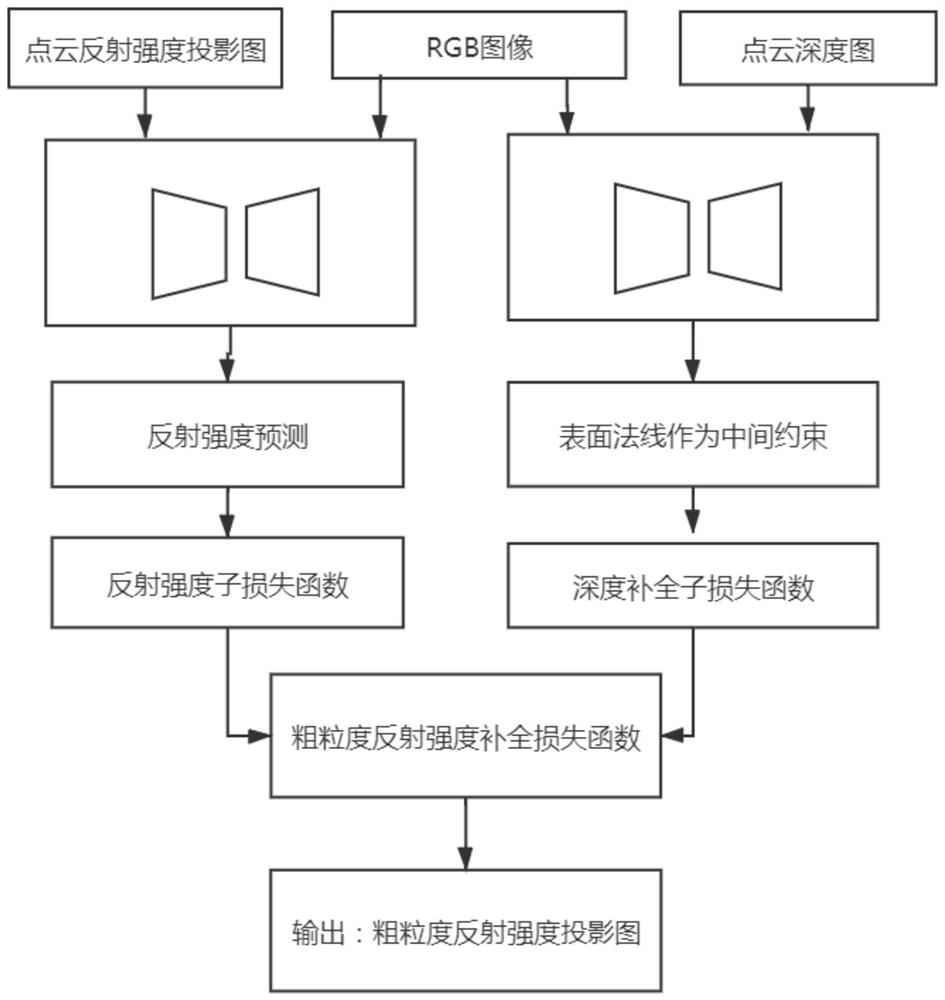Semantic segmentation-based point cloud intensity completion method and system
A semantic segmentation and completion technology, applied in image enhancement, image analysis, image data processing, etc., can solve the problems of beam energy loss, received signal weakening, lack of reference, etc.
- Summary
- Abstract
- Description
- Claims
- Application Information
AI Technical Summary
Problems solved by technology
Method used
Image
Examples
Embodiment 1
[0083] like figure 1 As shown, Embodiment 1 of the present invention proposes a point cloud intensity complement method based on semantic segmentation, and the specific implementation steps are as follows:
[0084] Step 1) Obtain the three-channel RGB image and point cloud data of the same scene respectively through the monocular camera and the lidar; specifically include:
[0085] Step 101) obtain the RGB image CI of road condition by vehicle-mounted monocular camera;
[0086] The image information of the front scene is collected by a forward-facing monocular camera or a forward-facing monocular camera installed on a driving vehicle. The forward-facing monocular camera collects road surface image information directly in front of the driving direction of the vehicle and above the road surface. That is, the collected road surface image information is a perspective view corresponding to information directly in front of the driving direction of the collected vehicle and above t...
Embodiment 2
[0147] Based on the above method, Embodiment 2 of the present invention proposes a point cloud intensity complement system based on semantic segmentation, which mainly includes a camera, a laser radar, and four modules, which are respectively a point cloud data preprocessing module, a coarse-grained reflection intensity complement Full module, semantic segmentation module, and fine-grained reflection intensity completion module, among which:
[0148] A camera for collecting RGB images of the road surface;
[0149] LiDAR, for synchronous collection of point cloud data of the road surface;
[0150] Point cloud data preprocessing module: According to the laser radar point cloud data, based on the calibration results of radar and camera, the three-dimensional point cloud is spatially transformed to generate a single-channel two-dimensional reflection intensity projection map and a single-channel two-dimensional depth projection map;
[0151] Coarse-grained reflection intensity co...
PUM
 Login to View More
Login to View More Abstract
Description
Claims
Application Information
 Login to View More
Login to View More - R&D
- Intellectual Property
- Life Sciences
- Materials
- Tech Scout
- Unparalleled Data Quality
- Higher Quality Content
- 60% Fewer Hallucinations
Browse by: Latest US Patents, China's latest patents, Technical Efficacy Thesaurus, Application Domain, Technology Topic, Popular Technical Reports.
© 2025 PatSnap. All rights reserved.Legal|Privacy policy|Modern Slavery Act Transparency Statement|Sitemap|About US| Contact US: help@patsnap.com



